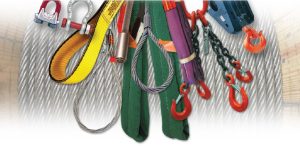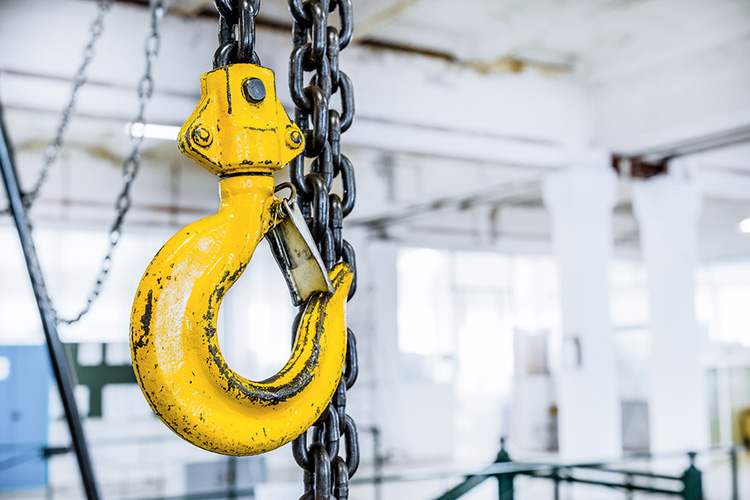What is the Difference Between Lifting and Rigging?
When it comes to heavy equipment operations and duties, rigging and lifting often work hand-in-hand. Rigging is the equipment used on job sites to assist with lifting heavy objects. Examples of the rigging equipment frequently used on construction sites includes wire rope, turnbuckles, clevis and jacks that might be used with cranes and other lifting equipment. Rigging is used on most construction sites to move and place materials.
Lifting refers to machines such as boom lifts, scissor lifts, forklifts and other types of man-lifts and aerial-lifts which are used to move crew members or material around a site. lifts refer to machinery that features an aerial platform that is supported by an extension and is mounted on a vehicle for the purpose of lifting objects or people.
How Many Types of Rigging are There?
The objects that need to be moved normally determine the type of rigging that is needed for the job. There are many different types of rigging but the most commonly used types are:
- Rigging Hooks
- Pulleys and Blocks
- Shackles
- Eye Bolts
- Steel Nuts
- Wire Ropes and Accessories
- Synthetic Lifting Slings
Hoists may also be used when materials are too heavy or too bulky to be safely moved manually.
How do you Calculate Rigging Loads?
There are several ways to calculate the weight of a rigging load, however, in some cases you do not even need to calculate the load weight itself. Scenarios where you do not need to calculate load weight include the following:
- Weight is provided on the engineering prints or design plans
- You are using an industrial scale
- The actual load is marked with its weight
- A review of the manufacturer’s specifications or catalog data provides the weight
If the weight is undetermined or hasn’t been provided, then you will need to do some calculations to determine load weight. Below are high-level steps and conditions to consider when calculating the weight of the load:
- Determine the Volume of the Load: You’ll determine the load’s volume by multiplying the length by the width by the height. Volume = Length x Width x Height
- Use a Chart that Shows Approximate Weights for the Material You’ll be Lifting: For some material an approximate weight can be determined from a chart. Examples of this are aluminum, which is approximately 165 pounds per cubic foot, and asphalt, which is approximately 81 pounds per cubic foot. The chart below provides additional examples:
| Material | Pounds / Cubic Foot | Material | Pounds / Cubic Foot |
| Aluminum | 165 | Iron Casting | 450 |
| Asbestos | 153 | Lead | 708 |
| Asphalt | 81 | Lumber (Fir) | 32 |
| Brass | 524 | Lumber (Oak) | 62 |
| Brick | 120 | Lumber (RR Ties) | 50 |
| Bronze | 534 | Oil, Motor | 58 |
| Coal | 56 | Paper | 58 |
| Concrete | 150 | Portland Cement | 94 |
| Crushed Rock | 95 | River Sand | 120 |
| Diesel | 52 | Rubber | 94 |
| Dry Earth (loose) | 75 | Steel | 480 |
| Gasoline | 45 | Water | 63 |
| Glass | 162 | Zinc | 437 |
- Determine the Weight of the Object: The object’s weight is determined by multiplying pounds per cubic foot of the material times the calculated volume of the load. This will provide you the weight of the load.
What is the Work of a Rigger?
The general duties of a rigger include preparing and setting up construction sites, warehouses and any other type of site where heavy objects need to be moved. Some responsibilities of a rigger include:
- Aligning and anchoring machinery
- Attaching loads
- Controlling the movement of heavy equipment while in operation
- Calculating load weights
- Hand Signals
- Knowing OSHA and ANSI Requirements
Possibly the most important duty of a rigger is ensuring the rigging equipment is safe for use.
What is Critical Lift?
Understanding critical lift and what it means is very important for any rigger and construction manager. Critical lift is a lift that exceeds 75% of the rated capacity of the crane. It could also mean that the load is so heavy that it requires more than one crane to be properly moved.
Determining if a critical lift is required is generally determined by a qualified person, like someone in management, although a seasoned rigger can also determine if a critical lift is needed while surveying the site.
How Many Types of Lifts are There?
There are a few different types of lifting equipment that can be used for either outdoor and indoor job sites. Depending on the job and depending on the site will define the type of lift that is required.
- Articulating Boom Lifts: Typically used for repairs and maintenance sites for lifting workers to the construction area.
Telescopic Boom Lifts: Used for lifting one or more workers in situations when a longer reach is needed. Telescopic boom lifts are used for outdoor sites. - Cherry Pickers: Used for maintenance work as well as remodeling and installation job sites. A cherry picker is used for lifting one or more workers.
- Electric Scissor Lifts: Used in indoor settings to get around narrow and small spaces. Multiple workers will fit on a single electric platform.
- Rough Terrain Scissor Lifts: Used for outdoor construction sites which have uneven surfaces. Its single platform will accommodate multiple workers.
- Telescopic Forklifts: These machines are used when both weight capacity and height needs are required for a job site.
Rough Terrain Forklifts: Used for transporting items through rough terrain and over long distances. - Industrial Forklift: Used for indoor warehouse jobs to move heavy loads up or down.
What are the Hazards of Lifting?
In construction work, and when working with lifting equipment specifically, there is always the danger of getting injured on the job. In some cases it may just be a matter of being in the wrong place at the wrong time. A few examples of the hazards in lifting:
- Lifting Equipment Failure
- Falling Loads
- Workers being injured from a moving load or lifting equipment
- Electrical Hazards
Ultimately it’s up to every worker to be aware of their surroundings while on a site, particularly when heavy objects are being moved overhead.
What is the Safety Factor for Lifting Equipment?
The safety factor, also known as the safe working load (SWL), is the maximum safe weight that lifting equipment can lift without breaking. The safety factor weight is calculated by the minimum break load divided by the safety factor (usually within a range of 4 to 6).







